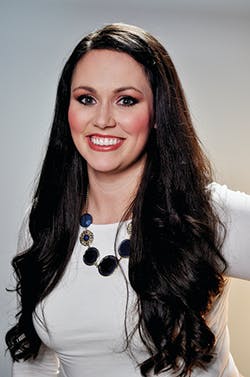Pre-rinsing: An old rule with new benefits
One day, the COVID-19 pandemic will have passed. We will go back to seeing patients, but we will not go back to "normal." Things will have changed. There may be new OSHA guidelines, or at the very least, we will follow the current rules much more closely. One thing that won’t change, however, is pre-rinsing. We were taught to do this in school with every patient, and we know we should be doing it. However, it's safe to say that this isn't universally done. In fact, in my unscientific poll of clinicians (I called 25 friends), I found that fewer than 20% had their patients pre-rinse. But I'm betting that number will be close to 100% post-pandemic.
In this article, I'll look at the importance of pre-rinsing. I'll also look at a product that helps protect clinicians and patients from aerosolized viruses, bacteria, and fungi.
Why pre-rinse?
In the dental environment, aerosols are dangerous carriers of contaminants. Nose secretions, throat secretions, and blood can become aerosolized during appointments. These aerosols remain in the air, settle on surfaces, and can be re-aspirated. They can contain viruses, bacteria, and fungi. Contaminants can travel up to 30 feet and be found in areas that are not used for daily appointments.1,2
It makes sense that we should attempt to eliminate or, at a minimum, lower the number of contaminants that come flying out of the mouth as aerosols. Some offices that are pre-rinsing have used chlorhexidine or another rinse that is available over the counter. This is better than nothing. But these products may only kill bacteria and do nothing for viruses or fungi.
As we have been made acutely aware of in recent days, the reduction of viruses is critical to protect ourselves and our patients. To reduce risk, we must look for a pre-rinse that is effective against these pathogens.
Chlorine dioxide
When searching for chemical ingredients that kill viruses, fungi, and bacteria, few beat the oxidizing power of chlorine dioxide. Surprisingly, chlorine dioxide is a gas. It has historical usage and effectiveness against viruses, bacteria, and fungi, and is used in other industries to break up biofilm. It and has been used by water treatment systems for years to keep drinking water safe. It has also been used in the abatement of buildings during anthrax attacks, as well as in the post-harvest of foods. In each of these cases, chlorine dioxide is chosen because of its unique and effective removal of microbes in comparison to other disinfectants. It specifically excels in comparison in its superiority to many other products as a virucide.3 Among many dental professionals, activated chlorine dioxide is considered to be an ideal pre-rinse. Its ability to effectively kill not only bacteria, but also viruses and fungi, has many dental practices incorporating it into their daily routine of personal protective measures.
"Activated" versus "stabilized" chlorine dioxide
Something to look out for is "stabilized" chlorine dioxide. This compound is, in fact, sodium chlorite (a salt), but the phrase is sometimes used as a synonym for chlorine dioxide. The word "stabilized" describes a formulation that has the same or similar chemical properties to chlorine dioxide, which in this context is called "activated" chlorine dioxide. But the two are different.
Stabilized chlorine dioxide is prepared by buffering sodium chlorite with carbonate or phosphate and hydrogen peroxide. This approach stabilizes the chlorite. The resulting compound does not have the same oxidizing properties. To make activated chlorine dioxide, two compounds are mixed each time before use. That mixture of two liquids forms the gas, and the gas that is released is activated chlorine dioxide.
A product that uses activated chlorine dioxide is OraCare. In-office uses include pre-rinsing, post-rinsing, and irrigation. This product also contains xylitol as an active ingredient. It can also be used for treatment of bleeding gums and periodontitis, as well as for implant maintenance, dry mouth, bad breath, and mouth sores.
The takeaway
Now is the time to take an introspective look at our day-to-day protective measures. In reality, we are always at risk, and pre-rinsing is one important step to protect ourselves.
References
- Lewis MA. Herpes simplex virus: An occupational hazard in dentistry. Int Dent J. 2004;54(2):103-111.
- Szymanska J. Dental bioaerosol as an occupational hazard in a dentist's workplace. Ann Agric Environ Med. 2007;14(2):203-207.
- Disinfectants: Chlorine Dioxide. Lenntech. https://www.lenntech.com/processes/disinfection/chemical/disinfectants-chlorine-dioxide.htm
Disclosure: The author has a financial relationship with OraCare.
About the Author

Kristin Goodfellow, RDH
Kristin Goodfellow, RDH, is the director of clinical education at OraCare. She obtained her bachelor’s degree in communication studies from West Virginia University and her associate degree in dental hygiene from Allegany College of Maryland. Her outstanding chairside education earned her the recipient of the Procter & Gamble Excellence in Patient Communication Award in 2013.

